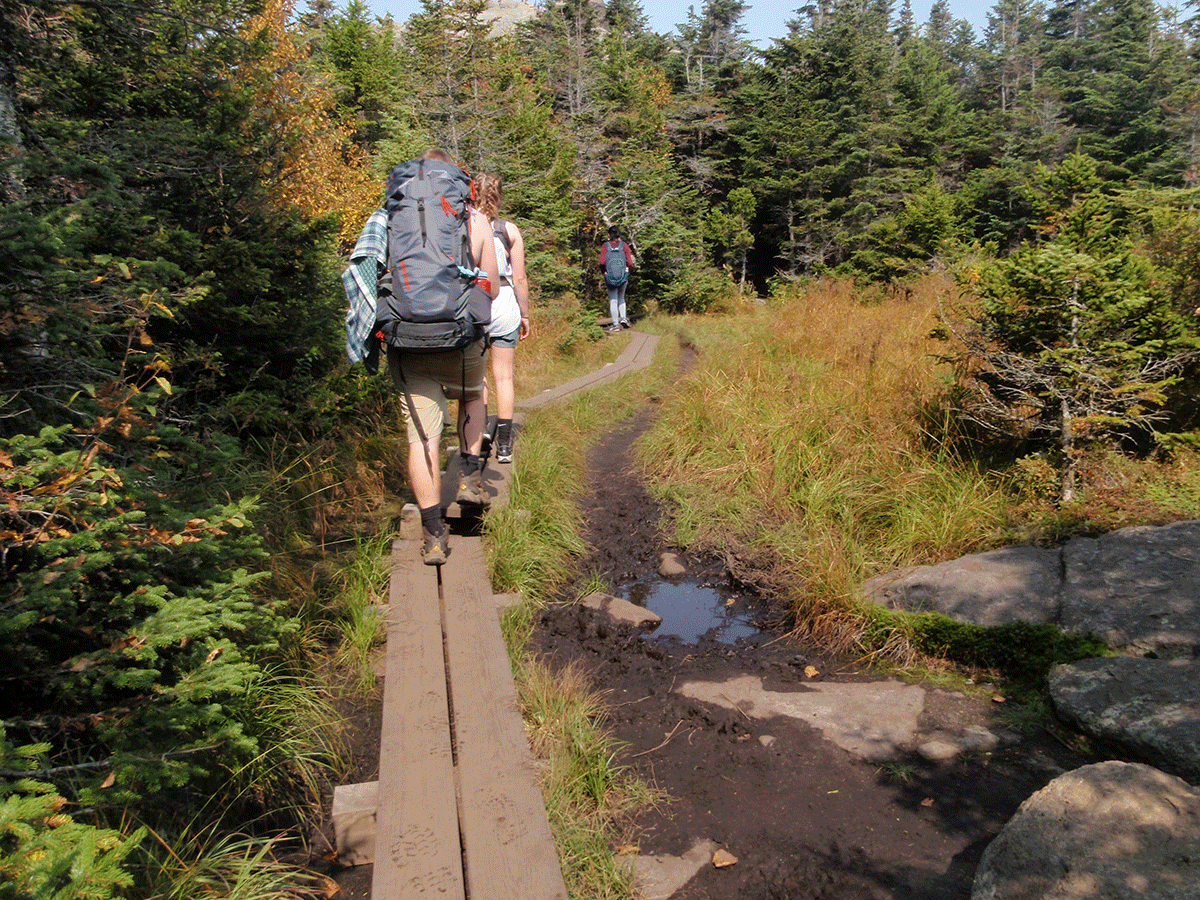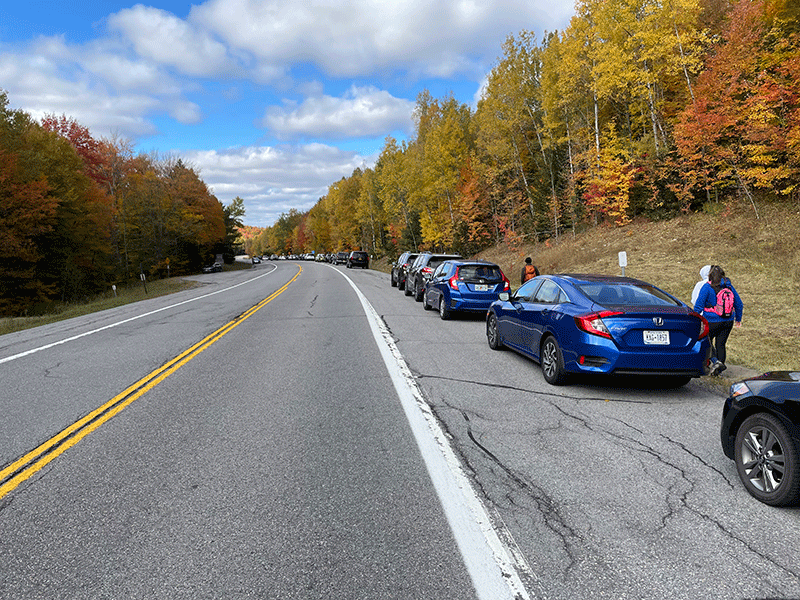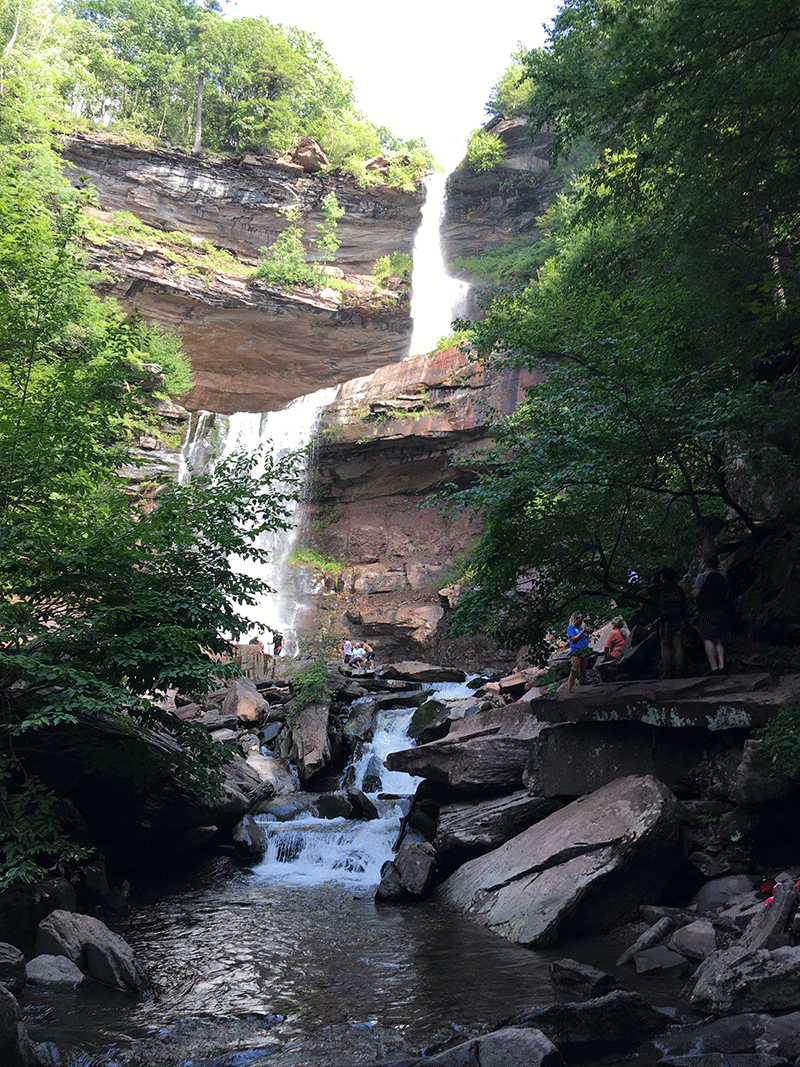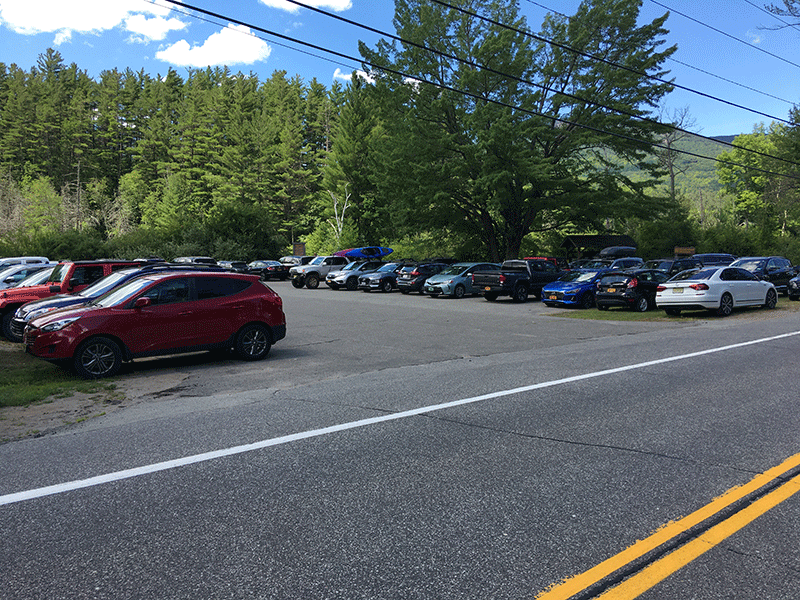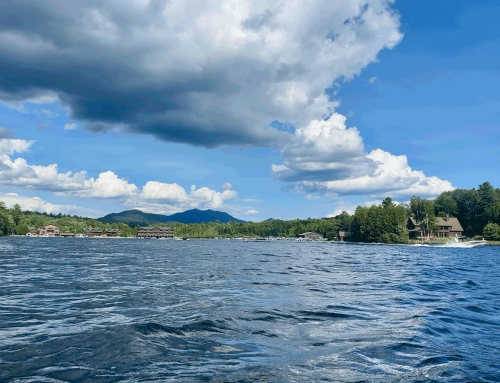The Department of Environmental Conservation (DEC) recently issued a Request for Proposals (RFP) for development of a “Visitor Use Management” Plan for the Central High Peaks Wilderness Area in the Adirondack Park and the Kaaterskill Clove/Route 23A corridor of the Catskill Park. The RFP marks a major step forward in DEC’s efforts to evaluate and address a series of impacts to the natural resources, the visitor experience, and public safety due to high recreational use in these two popular destinations on the Forest Preserve.
These impacts include physical degradation of trails and other recreational facilities, impairment of water quality, crowded trails and summits, and parking shortages and unsafe conditions along busy state highways. Calls for adopting Visitor Use Management planning and programs, long a staple of the National Park Service, have been made by advocates and academics over the years. Issuance of the RFP implements one of the key recommendations of the High Peaks Advisory Group and the Catskill Advisory Group.
The DEC has struggled to establish a management framework that it can use to assess and manage public use impacts to both the natural resources on the Forest Preserve and the public’s experience on the trails. Seeking outside expert help is an important step forward and marks an attempt at serious reform for how the DEC manages the Forest Preserve. This is the second article in a 3-part series that looks at nascent Forest Preserve management reforms underway at the DEC. Click here to read Part One that looked at how state agencies plan for and undertake work on the Forest Preserve.
The RFP requires two concurrent Visitor Use Management (VUM) planning processes to take place over a 2-year period for the Adirondack and Catskill Park areas slated for study. Each process will address the experiential, social and safety aspects of visitor use, with particular focus on identifying desired conditions for visitor experience, environmental and ecological sustainability and public safety.
The DEC and the Adirondack Park Agency (APA) have struggled to develop, utilize, and implement a public recreational use assessment and management program on the Forest Preserve. This is something that the National Park Service has done for years, but its practice in the Adirondacks eluded state agencies. The decision to seek outside, expert help to develop and operationalize a VUM plan at two highly used areas of the Forest Preserve is an important step forward.
The DEC and APA have long recognized the need for this type of comprehensive management framework. Various Unit Management Plans (UMP) developed by the DEC and approved by the APA made feints at utilizing some kind of management framework. Here’s an excerpt from the 2017 Saranac Lake Wild Forest Area UMP, one of most recent approved UMPs:
The long-term approach for managing the SLWF uses a combination of three generally accepted planning and monitoring methods: (1) the goal-achievement process; (2) the Limits of Acceptable Change (LAC) model employed by the U.S. Forest Service; and (3) the Visitor Experience and Resource Protection (VERP) model employed by the National Park Service. Given the distinctly different, yet important purposes of these methods(particularly between the first method and the second two), there are clear benefits offered by employing a blend of these approaches here. (p 68)
In the Saranac Lake Wild Forest Area UMP, the DEC writes pages about its analytical framework, but in reality nothing was ever done. As shown above, the DEC pretended to have a management framework that was a special hybrid of various established programs, but nothing ever happened. For its part the APA used the DEC’s write-ups, recycled from UMP to UMP, to check boxes for compliance with the Adirondack Park State Land Master Plan.
The 2018 High Peaks Wilderness UMP amendment took a stab at a new and improved “Wildlands Monitoring Plan” that committed the DEC to organizing and implementing a skeletal recreation ecology management program. Unfortunately,the new “Recreational Resources and Human Uses” section in High Peaks UMP amendment failed to provide important information or provide a schedule for development and implementation of this plan. While basing a lot of this framework on “Best Management Practices,” little useful information was provided for these BMPs. Subsequent requests for the protocols were met with “they’re not ready yet for public review.”
In the 2018 High Peaks UMP amendment, DEC stated that “the essentials for wildland management” are “planning, education and outreach, frontcountry infrastructure, backcountry infrastructure, limits on use when all else fails and resources both personnel and funding.” The DEC stated that it will rely on six Best Management Practices that include “planning; education and outreach; frontcountry infrastructure; backcountry infrastructure; limits on use; and, financial resources for both personnel and programs.” DEC and APA staff worked together to flesh out this program but nothing was ever operationalized in the field.
The upshot is that DEC-APA has never been any good at scientific monitoring of public use and impacts to natural resources on the Forest Preserve.
Visitor Use Management is a proactive and adaptive process that provides a framework for managing public recreational use in a variety of settings and natural resource conditions. It’s meant to encourage public access to public lands, be flexible and iterative, to experiment, and to utilize active scientific monitoring of natural resource conditions and public use experiences. The goal is to make outdoor recreational tourism and visitation sustainable and beneficial on the natural resources of a specific protected area. It’s meant to be a realistic method to manage high public use in a sensitive area in a way that sustains, if not enhances, that area’s natural or cultural resources.
Planning for the intended use of a trail or access system is critical to successful Visitor Use Management. Is this a trail that will see hundreds of hikers per day? Or will it see only a hundred in a month? The VUM framework bases a lot on desired conditions and standards. In an area as complex and dynamic as the High Peaks, the goals for the protection and public use of Allen Mountain are very different than those for Phelps or Giant Mountains.
Given the fits and starts of the DEC and APA on this issue, the decision to seek outside help is wise. The Interagency Visitor Use Management Council has a lot to offer and there are various consultants and academics that have helped to expand this field. There are numerous publications and websites about Visitor Use Management.
Click here for general information about the work of the Interagency Visitor Use Management Council that has worked to develop this program and put it to use.
Click here to check out “visitor capacity guidebook” that’s a manual for managing public use in wild areas.
Click here to check out the “Visitor Capacity Monitoring Guidebook” that’s a manual for monitoring public use in wild areas.
Their website provides other instructive papers and manuals available to provide background and information on the benefits of Visitor Use Management.
In accordance with the timetable specified in the VUM RFP, the contractor will clarify the project purpose and need; review the area’s purpose and applicable legislation, agency policies, and other management direction; assess and summarize existing information and current conditions; develop a project action plan; define desired conditions for the project area; define appropriate visitor activities, facilities, and services; select indicators and establish thresholds; compare and document the differences between existing and desired conditions and, for visitor use-related impacts, clarify the specific links to visitor use characteristics; identify visitor use management strategies and actions to achieve desired conditions; where necessary, identify visitor capacities and additional strategies to manage use levels within capacities; and develop a monitoring strategy and evaluation techniques.
These actions will be undertaken by a Core Team consisting of the contractor and staff from DEC, including a DEC project manager. In the High Peaks region, the Core Team will also include staff from the APA. The contractor will solicit public feedback on desired conditions and other project elements by conducting at least two public meetings or planning workshops for each project location. The contractor and DEC will work jointly to provide a public comment period on the draft report and to review and summarize public comments on the draft report. The RFP notes that additional outreach to stakeholder groups will be necessary to pursue consensus on critical components of the projects.
The final report, which must be completed within two years of the contract date, will be used by DEC to implement management actions; conduct monitoring and evaluate the effectiveness of management actions in achieving desired conditions; and adjusting management actions if needed to achieve desired conditions.
Bids for the VUM contract were submitted in mid-August 2022 and the DEC is currently working on finalizing the contract’s scope of work with the winning bidder. The DEC anticipates making an announcement about the contract this fall and its work will likely start immediately thereafter. Field work would begin 2023. The contract will run for two years, with the end of 2024 as the completion date, but the contract will allow for a one-year extension if necessary.
Many people and organizations in the Adirondacks and Catskills are hopeful that successful demonstration projects utilizing VUM management methods and programs can be organized for part of the High Peaks Wilderness and Kaaterskill Falls.

